List of Tools: A Guide Useful Tools for DIY Projects
Explore a comprehensive guide to essential tools for DIY projects. From hand tools to power tools, discover a curated list of resources to enhance your crafting endeavors and tackle projects with confidence.
This post may contain affiliate links, I earn from qualifying purchases at no extra cost to you. Click here for my disclosure policy
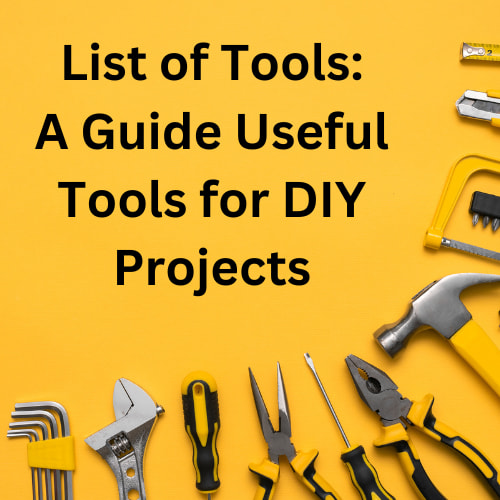
DIY projects hold a special allure for individuals, offering a unique blend of creativity, learning, and the satisfaction of building something with one’s own hands. Whether it’s crafting a piece of art, assembling a gadget, or even constructing furniture, the act of creating something from scratch is both empowering and educational. However, one of the biggest hurdles faced by DIY enthusiasts, especially when incorporating technology tools, is budget constraints. High-quality technology tools can be expensive, and balancing the cost with the need for durable and effective tools is a common challenge. This guide aims to navigate this challenge by introducing people to affordable and useful technology tools that don’t compromise on quality, enabling them to bring their creative visions to life without breaking the bank.
List of Tools: Understanding the Essentials of DIY Tools
When diving into DIY projects, the selection of tools is crucial for people of all ages and backgrounds, not just students. Individuals need to look for tools that offer the best combination of cost-effectiveness, versatility, and durability. This means prioritizing tools that can be used across a wide range of projects, from simple repairs to more complex constructions. Moreover, it’s important to consider the long-term value of each tool, opting for those that are built to last rather than disposable options that might need frequent replacement. Similarly, when contemplating the use of academic assistance services, such as requests like ‘write paper for me,’ individuals must weigh the benefits of such services against the educational value of completing assignments themselves. Just as choosing the right DIY tools requires a balance between cost and the opportunity for learning and personal growth, selecting academic support services necessitates a careful consideration of how they can enhance one’s learning journey without undermining the development of independent skills.
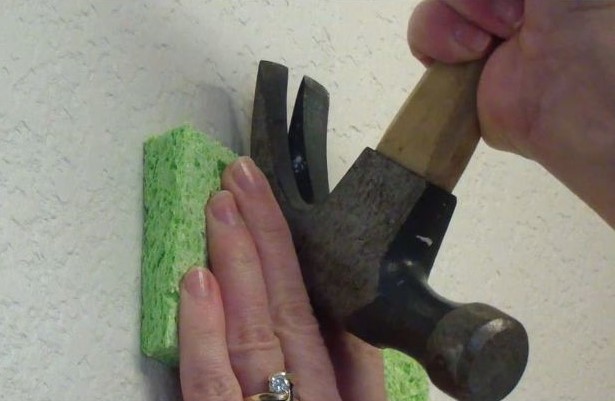
What are most common tools?
The most common tools can vary depending on the context, such as industry, profession, or task. However, some tools are widely used across different domains. Here are some must-have tools examples:
- Hammer: Used for driving nails, fitting parts, breaking objects, etc.
- Screwdriver: Used for turning screws.
- Wrench: Used for turning nuts and bolts.
- Pliers: Used for gripping, bending, and cutting various materials.
- Tape Measure: Used for measuring distances.
- Level: Used for determining whether a surface is horizontal or vertical.
- Drill: Used for making holes in various materials.
- Saw: Used for cutting wood, metal, or other materials.
- Knife: Used for cutting various materials.
- Carpenter’s Square: Used for measuring and marking right angles in woodworking.
- Adjustable Wrench: Has a jaw that can be adjusted to fit different sizes of nuts and bolts.
- Flashlight: Portable light source for illumination in dark areas.
- Safety Gear: Includes items such as gloves, goggles, helmets, and masks for protection while working.
These tools are fundamental across many fields, including construction, woodworking, automotive repair, plumbing, electrical work, and general household maintenance. Don’t forget the toolbox to keep them all in too.
What are basic hand tools?
Basic hand tools typically include those essential for common household repairs, maintenance tasks, and DIY projects. Here’s a list of some basic hand tools:
- Hammer: Used for driving nails, adjusting or removing nails, and general carpentry work.
- Screwdriver Set: Includes various types and sizes of screwdrivers for driving and removing screws. Common types include flat-head and Phillips-head screwdrivers.
- Adjustable Wrench: Also known as a crescent wrench, used for turning nuts and bolts of different sizes.
- Pliers: Used for gripping, bending, and cutting wires or small objects. Common types include needle-nose pliers and combination pliers.
- Tape Measure: Used for measuring distances, lengths, and widths accurately.
- Level: Used for determining whether a surface is horizontal (level) or vertical (plumb).
- Utility Knife: Used for cutting various materials, such as cardboard, plastic, or carpet.
- Handsaw: Used for cutting wood, plastic, or other materials by hand. Common types include crosscut saws and hacksaws.
- Adjustable Slip-Joint Pliers: Similar to regular pliers but with an adjustable pivot point to accommodate different sizes of objects.
- Flashlight: Provides illumination in dark or poorly lit areas during repairs or inspections.
- Hex Key Set (Allen Wrench Set): Used for driving screws or bolts with hexagonal sockets.
- Claw Hammer: A specific type of hammer with a flat striking surface for driving nails and a curved claw for removing nails.
- Carpenter’s Square: Used for measuring and marking right angles in woodworking and other tasks.
- Scissors: Used for cutting various materials such as paper, fabric, or thin plastics.
- Sockets and Ratchet Set: Used for tightening or loosening nuts and bolts with greater torque compared to a standard wrench.
These basic hand tools cover a wide range of tasks commonly encountered in household repairs, maintenance, and DIY projects. They provide versatility and utility for both professionals and homeowners alike.
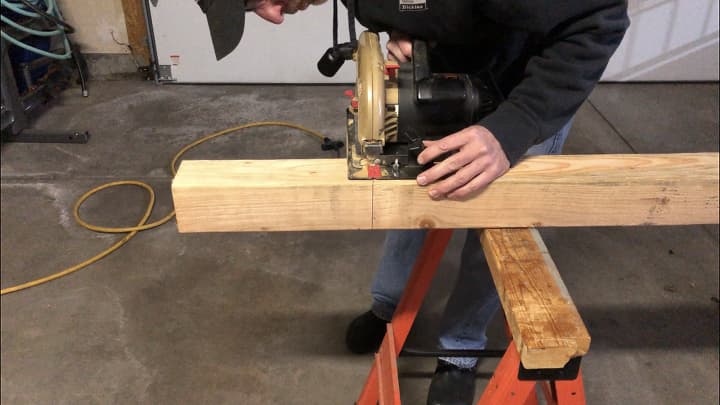
List of Tools: Essential Power Tools
Essential power tools are those that are commonly used for various tasks in woodworking, construction, DIY projects, and other applications where power assistance is needed. Here’s a list of essential power tools:
- Power Drill: Used for drilling holes and driving screws. Corded and cordless models are available, with varying speeds and torque levels.
- Circular Saw: A handheld saw with a rotating blade, used for cutting wood, plastic, and metal sheets.
- Jigsaw: A versatile saw with a narrow blade that moves up and down, allowing for curved and intricate cuts in wood, metal, and plastic.
- Miter Saw: Also known as a chop saw, used for making precise angled cuts in wood, typically for framing, molding, and trim work.
- Table Saw: A stationary saw with a circular blade protruding from a tabletop, used for making straight cuts in large pieces of wood or other materials.
- Reciprocating Saw: A handheld saw with a blade that moves back and forth, ideal for cutting through materials like wood, metal, and PVC pipe in tight spaces.
- Random Orbital Sander: Used for sanding wood, metal, and other surfaces with a random circular motion, reducing swirl marks and providing a smooth finish.
- Belt Sander: A powerful handheld or stationary sander with a continuous loop of sandpaper, used for rapid material removal and leveling surfaces.
- Router: Used for shaping edges, creating intricate patterns, and cutting grooves in wood and other materials. Handheld and table-mounted routers are available.
- Power Screwdriver: Similar to a drill but with a focus on driving screws quickly and efficiently, often with adjustable torque settings.
- Compound Miter Saw: Similar to a miter saw but with the ability to tilt the blade for making bevel cuts in addition to miter cuts.
- Impact Driver: A high-torque tool specifically designed for driving screws and fasteners into tough materials without stripping the screw heads.
- Planer: Used for shaving thin layers of wood to create smooth, flat surfaces and precise thicknesses.
- Cordless Multi-Tool: A versatile tool with interchangeable accessories for cutting, sanding, grinding, scraping, and other tasks in tight or hard-to-reach areas.
- Nail Gun: Used for quickly and efficiently driving nails into wood or other materials, saving time and effort compared to manual hammering.
These power tools can significantly increase efficiency, precision, and productivity in various projects and tasks, making them essential for both professionals and DIY enthusiasts.
List of Tools: Specialized Tools for Electronics
For students venturing into the realm of electronic projects, whether it’s assembling a PC, repairing gadgets, or creating custom electronic devices, a soldering iron and a multimeter can be useful. A basic soldering iron is indispensable for any electronics project, allowing you to join components with precision. A multimeter is crucial for diagnosing electrical issues and measuring voltage, current, and resistance. It’s a window into the workings of your electronic creations.
Starting with these tools opens up a world of DIY electronics projects. Look for starter kits that offer both a soldering iron and a basic multimeter, often accompanied by additional useful tools like tweezers and solder wick, to get the best value.
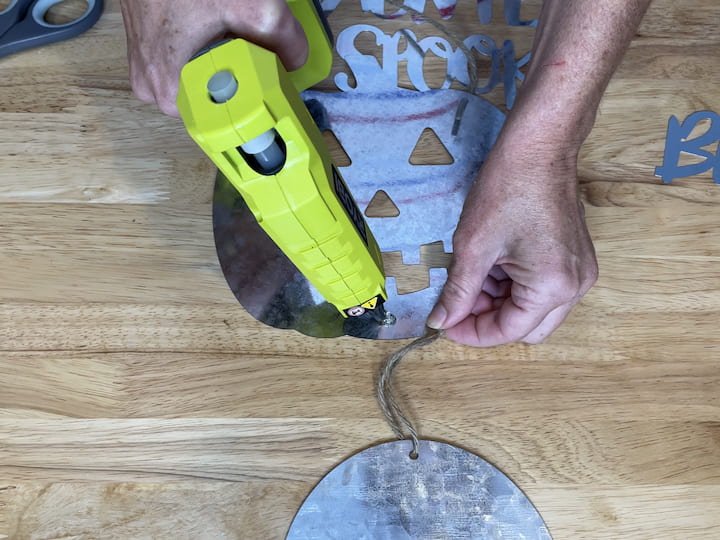
Budget-Friendly Crafting Supplies
Crafting can be a relaxing and rewarding pastime for students, offering a break from the rigors of academic life. To support this hobby, incorporating technology tools for students along with a few budget-friendly supplies can significantly enhance the crafting experience. For example, a hot glue gun is an ideal tool for quick fixes and craft projects, making it a must-have for its versatility and ease of use. Additionally, consider investing in a utility knife and a cutting mat for precise cuts on paper, cardboard, fabric, and other materials in crafting projects that require accuracy. Integrating these supplies allows students to explore a wide range of crafting activities, from homemade decor to personalized gifts, without spending a fortune, while leveraging technology tools to further their creative exploration.
Here’s a list of budget-friendly crafting supplies that can be used for various DIY projects and creative endeavors:
- Acrylic Paint: Versatile and affordable, acrylic paint comes in a wide range of colors and can be used on various surfaces such as paper, canvas, wood, and fabric.
- Paintbrush Set: Look for budget-friendly paintbrush sets that offer a variety of brush shapes and sizes for different painting techniques.
- Sketchbook or Drawing Pad: Essential for sketching, doodling, and planning out creative ideas. Opt for a basic sketchbook or drawing pad that fits your budget.
- Colored Pencils: Great for coloring, shading, and adding details to sketches and drawings. You can find budget-friendly sets with a decent range of colors.
- Markers: Basic marker sets are available at affordable prices and are suitable for drawing, coloring, and outlining.
- Glue Stick: A handy adhesive for paper crafts, collage projects, and other creative endeavors. Budget-friendly glue sticks are widely available in multi-packs.
- Scissors: Invest in a pair of sharp, durable scissors for cutting paper, fabric, and other materials. Look for budget-friendly options with good reviews.
- Craft Paper: Stock up on basic craft paper in various colors and textures for origami, card-making, scrapbooking, and other paper crafts.
- Washi Tape: Decorative and versatile, washi tape can add color and patterns to projects without breaking the bank. Look for affordable multi-packs or single rolls.
- Fabric Scraps: Visit thrift stores or fabric shops to find budget-friendly fabric scraps for sewing, quilting, and other fabric-based crafts.
- Beads and Jewelry Findings: Create your own jewelry designs with budget-friendly beads, charms, and findings available at craft stores or online.
- Polymer Clay: Affordable and easy to work with, polymer clay is perfect for sculpting jewelry, figurines, and small decorations.
- Embroidery Floss: Ideal for hand embroidery, friendship bracelets, and other textile crafts. Look for budget-friendly embroidery floss sets with a variety of colors.
- Wooden Craft Sticks: Versatile and inexpensive, wooden craft sticks can be used for building structures, crafting puppets, and more.
- Cardboard: Don’t underestimate the creative potential of cardboard! Use it as a base for sculptures, as backing for artwork, or for making DIY props and decorations.
These budget-friendly crafting supplies offer endless possibilities for creative expression and DIY projects without breaking the bank. Happy crafting!
Software and Online Resources
In addition to physical tools, digital resources can greatly enhance the DIY experience. Free or low-cost software tools, such as CAD programs for 3D modeling and photo editing software for design projects, expand the scope of what you can create. Furthermore, online tutorials, forums, and communities provide invaluable guidance, inspiration, and support, helping students learn new skills and share their projects with a global audience.
Tips for Maximizing Your Tool Investment
To ensure the longevity and effectiveness of your DIY toolkit, proper care and smart practices are essential:
- Regular maintenance, such as cleaning and sharpening, extends the life of your tools.
- Borrowing or renting tools for one-off projects can save money and storage space.
- Recycling and repurposing materials not only saves costs but also promotes environmental sustainability.
By adopting these practices, students can maximize the value of their investment in DIY tools, ensuring that their toolkit supports a wide range of projects over time.

List of Tools: More useful tools for DIY projects:
- Nut Chisel: A nut chisel is a handy tool for removing stubborn nuts and bolts. It features a sharp edge that allows you to chisel away rust or debris, making it easier to loosen nuts.
- Mallet: A mallet is a versatile tool that can be used for various tasks such as driving chisels, tapping wood joints together, or gently persuading stubborn pieces into place without damaging them.
- Clamps: Clamps are indispensable for holding pieces of wood or metal together securely while glue sets or while you work on them. They come in various sizes and styles, including C-clamps, bar clamps, and spring clamps.
- Pipe Wrenches: Pipe wrenches are essential for plumbing projects or working with pipes. They provide a strong grip and leverage to tighten or loosen pipes and fittings.
- Drawers: Though not a traditional tool, having a set of drawers or a toolbox to organize your tools is crucial for efficiency. It helps you keep your workspace tidy and ensures that you can quickly find the tool you need when you need it.
- Craftsmen Punches: Craftsmen punches are precision tools used for marking and aligning materials. They come in various shapes and sizes to suit different tasks, such as center punches for creating starting points for drilling or alignment punches for fitting parts together accurately.
- Milwaukee Cordless Drills: Milwaukee cordless drills are reliable and versatile tools for drilling holes and driving screws. They offer convenience and portability, making them perfect for DIY projects both indoors and outdoors.
- Combination Wrench: A combination wrench is a double-ended tool with a different-sized wrench on each end. It’s ideal for tightening or loosening nuts and bolts of various sizes.
- Stud Finder: A stud finder is essential for hanging shelves, pictures, or mirrors securely on walls. It helps you locate the wooden studs behind drywall, ensuring that your fixtures are anchored properly.
- Long Nose Pliers: Long nose pliers, also known as needle-nose pliers, feature long, slender jaws with a pointed tip. They are perfect for gripping and bending small objects or reaching into tight spaces.
- Voltage Tester: A voltage tester is a safety tool used to check if electrical circuits are live or dead before working on them. It helps prevent electrical shocks and ensures your safety when handling electrical projects.
- Beam Level: A beam level is crucial for ensuring that surfaces or structures are perfectly horizontal or vertical. It helps you achieve precise alignment, whether you’re installing shelves, framing walls, or hanging pictures.
- Channellock Pliers: Channellock pliers are versatile, adjustable pliers that can grip objects of various sizes securely. They feature a unique jaw design that provides maximum grip and leverage, making them ideal for a wide range of tasks.
- Rubber Mallet: A rubber mallet is a softer alternative to a traditional metal mallet. It’s ideal for tasks where you need to apply force without damaging delicate surfaces, such as assembling furniture or tapping wood joints together.
These tools, ranging from basic essentials like hammers and wrenches to more specialized items like stud finders and voltage testers, form the foundation of any DIY toolkit. Whether you’re tackling home improvement projects, assembling furniture, or working on craft projects, having these tools on hand will empower you to take on a wide range of tasks with confidence.

List of Tools Conclusion
Embarking on DIY projects is not only a way for individuals to express creativity but also an opportunity to develop practical skills and save money. With the right set of tools, from essential hand tools and power tools to specialized gadgets for electronics and crafting supplies, people can tackle a wide variety of projects. Moreover, leveraging digital resources, educational technology tools, and online communities enhances the DIY experience, offering support and inspiration. By investing wisely in tools that offer the best balance of price, versatility, durability, and educational value, individuals can ensure that their DIY projects are not only enjoyable but also rewarding in the long run.


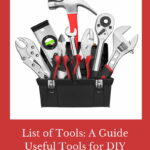






Loved this list, especially the mention of replacing old shower heads with water-saving ones! I’d also suggest adding a basin wrench to the kit, it’s a lifesaver for tightening or removing hard-to-reach faucet connections.